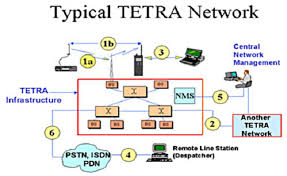RF Awareness in 5G: Enhancing Wireless Coverage and Performance
telcomatraining.com – The evolution of wireless communication has reached new heights with the deployment of 5G networks. As we continue to demand faster speeds, lower latency, and higher capacity, the underlying technology must adapt intelligently. One crucial enabler in this advancement is RF (Radio Frequency) awareness—a concept that empowers 5G systems to make smarter decisions in real time. But what exactly is RF awareness, and how does it contribute to improving wireless coverage and network performance?
What is RF Awareness?
RF awareness refers to the system’s ability to detect, interpret, and react to the surrounding radio frequency environment. In the context of 5G, RF awareness plays a pivotal role in dynamic spectrum management, signal optimization, and interference mitigation. It enables the network to “understand” its environment, detect obstacles, identify traffic patterns, and adjust its operations to ensure seamless connectivity.
By leveraging sensors, AI algorithms, and machine learning models, RF-aware systems collect data on signal strength, interference, device location, and usage behavior. This data is then analyzed in real time to make precise network adjustments, such as beamforming directions or handover decisions.
Enhancing Wireless Coverage
One of the key challenges of 5G networks is maintaining consistent coverage—especially in urban environments, where buildings, vehicles, and other structures can obstruct signals. RF awareness helps overcome this limitation by dynamically adapting transmission strategies.
For example, RF-aware antennas can detect signal blockages and redirect beams to find the most efficient path to the user. In areas with high device density, such as stadiums or shopping malls, RF awareness allows the network to anticipate usage spikes and allocate resources accordingly, preventing network congestion and maintaining stable service.
Furthermore, in rural or remote locations, where physical infrastructure may be limited, RF-aware systems can optimize the available signal paths to extend the reach of the network without requiring additional towers or base stations.
Boosting Network Performance
In 5G networks, performance isn’t just about speed—it’s also about consistency, reliability, and responsiveness. RF awareness significantly improves these metrics through intelligent signal processing and adaptive behavior.
By continuously monitoring RF conditions, the network can:
- Reduce latency by optimizing routing paths.
- Improve data throughput by managing interference and allocating spectrum efficiently.
- Ensure reliable connections during high-speed mobility scenarios, such as trains or autonomous vehicles.
- Support low-power IoT devices by minimizing unnecessary signal transmissions.
In essence, RF awareness allows the network to behave like a living system—learning from its environment and adapting proactively, not reactively.
RF Awareness and the Future of Smart Networks
As 5G continues to evolve, its integration with technologies like edge computing, AI, and the Internet of Things (IoT) will require even more intelligent management of wireless resources. RF awareness will be at the heart of this transformation.
Smart cities, connected vehicles, remote surgeries, and industrial automation all rely on ultra-reliable, high-performance networks. With RF-aware technologies, 5G can deliver on these promises by ensuring that every node in the network is not only connected but also contextually aware.
Additionally, RF awareness contributes to energy efficiency. By detecting when and where signals are needed, networks can reduce power consumption, extending the battery life of connected devices and reducing the environmental impact of massive 5G deployments.
Conclusion
RF awareness in 5G is not just a technical enhancement—it’s a foundational capability that enables the next generation of wireless connectivity. By improving coverage, optimizing performance, and supporting advanced applications, RF awareness helps ensure that 5G networks are not only faster but also smarter and more efficient. As the demand for seamless and reliable wireless communication grows, the role of RF-aware systems will become increasingly vital in shaping the future of global connectivity.







